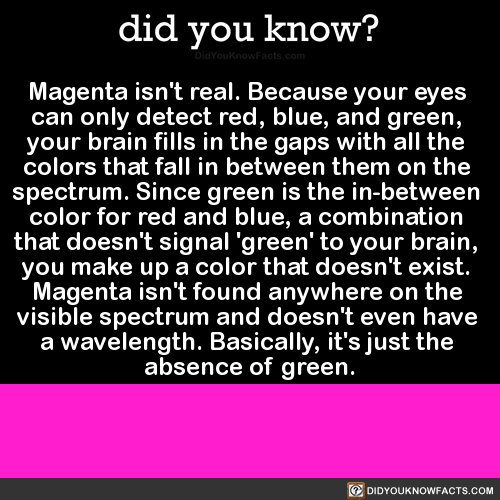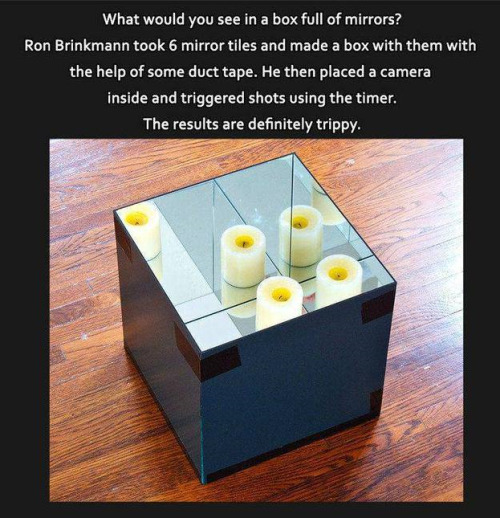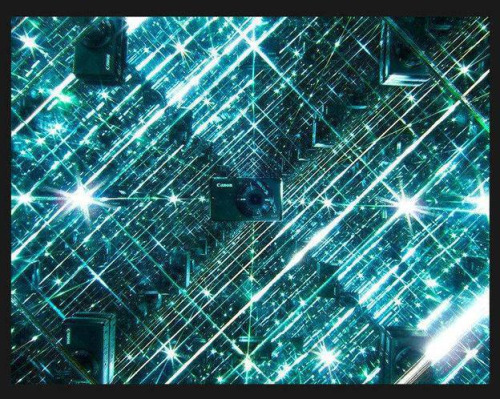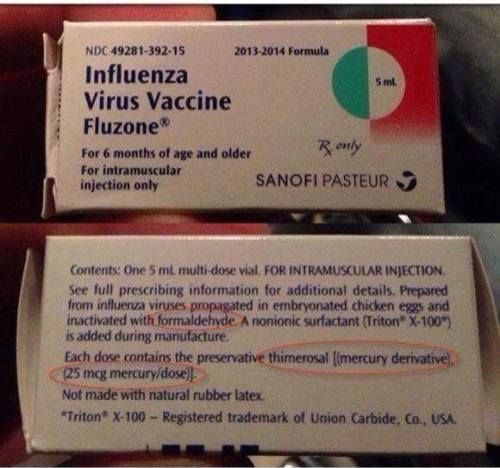A Powerful Solar Flare : It Was One Of The Most Powerful Solar Flares In Recorded History. Occurring

A Powerful Solar Flare : It was one of the most powerful solar flares in recorded history. Occurring in 2003 and seen across the electromagnetic spectrum, the Sun briefly became over 100 times brighter in X-rays than normal. The day after this tremendous X 17 solar flare – and subsequent Coronal Mass Ejection (CME) – energetic particles emitted from the explosions struck the Earth, creating auroras and affecting satellites. The spacecraft that took these frames – SOHO – was put in a turtle-like safe mode to avoid further damage from this and subsequent solar particle storms. The featured time-lapse movie condenses into 10 seconds events that occurred over 4 hours. The CME, visible around the central sun-shade, appears about three-quarters of the way through the video, while frames toward the very end are progressively noisier as protons from the explosions strike SOHO’s LASCO detector. One this day in 1859, the effects of an even more powerful solar storm caused telegraphs on Earth to spark in what is known as the Carrington Event. Powerful solar storms such as these may create beautiful aurora-filled skies, but they also pose a real danger as they can damage satellites and even power grids across the Earth. via NASA
More Posts from Science-is-magical and Others

It’s #InternationalKissingDay! Here’s some topical lipstick chemistry. More info/high-res image: http://wp.me/s4aPLT-lipstick
Info Post #1: What is DNA?
This is the first of thirteen more in-depth write-ups I have planned out for this year. The list (which is not set in stone!) can be found here.
I decided to do these as a way to get more information out to the readers here without having to delve into one specific ask or series of questions. I can imagine that these might create more questions as I go, but I’m also hoping that they will provide a resource that readers can refer back to. The general idea is to allow the series to build up in complexity, and give everyone a better understanding of these topics!
What is DNA?
This first topic is going to be relatively short, because in a couple of weeks I am going to do “what is a gene”, which will get much longer and more complicated, but I wanted some set up about the physical structure of DNA.
You might have heard DNA described in a lot of different ways. Deoxyribonucleic acid. The building blocks of life. The blueprint of You. None of these are particularity inaccurate, but I don’t think that any of them are super great descriptors of what exactly DNA is, or how exactly it goes from existing in cells to encoding entire organisms (although I am going to talk about the actual encoding part in the future).
For now, we are going to start small. Let’s only look at the actual physical structure. Here we have a DNA molecule:

image from wikimedia commons here
So beautiful! (I might be biased, but DNA is my favourite molecule- it’s elegant in both design and function.)
This can be broken down into two main parts:
The phosphate-sugar backbone (all those P’s and O’s and light blue on the outside)
The nucleobases (adenine [A], thymine [T], cytosine [C], and guanine [G]- the purple, pink, yellow and green)
I will point out the hydrogen bonds in the middle as well. Note that cytosine and guanine have three bonds between them, and adenine and thymine only have two. These molecules always bond in this pattern (A bonds to T, and C to G). If you’ve heard DNA being described as “complementary”, this is why! If you find a C on one strand, you know that you will find a G on the other (this became very important for sequencing, but we will talk about that later).
The hydrogen bonds in the middle are quite important as well. If these molecules were bonded to each other directly, it would be basically impossible to open the strand to “read” the DNA. Instead, this can be done by breaking those hydrogen bonds, and then allowing them to reform. This does mean that a mutation is much more likely in a high A-T region rather than a high C-G on, simply because A-T only has two bonds, and C-G has three. As well, quite often before a gene is encoded, there’s a long stretch of TATA- repeated (these are cleverly called TATA-boxes), so that the strand can more easily be opened and the encoded gene read. More on that when I talk about what a gene is!
And that is honestly pretty much it for DNA (I say that in jest- there is a lot more, and this is the result of a few billion years of evolution!). It’s not a terribly complicated design, which is probably why it is so immensely biologically successful.
So, there we have it: a very, very quick rundown that is mostly to get some important features pointed out before I talk about what a gene is, and how DNA encodes them on January 31st. This is hardly comprehensive, but I will get more in-depth into the structure and features then, and I didn’t want to make that info post horrendously long. Thanks for reading!
A reminder that NASA isn’t the only space agency
I have seen many “Space achievements 2015” articles and posts leaving international accomplisments completely out, so here are some of them:
1. A new type of basaltic rock on the moon was found by Chinese robotic lander.
China National Space Administration’s Chang’e-3 landed on the Moon on 14 December 2013, becoming the first spacecraft to soft-land since the Soviet Union‘s Luna 24 in 1976.

2. On February 11, the European Space Agency, ESA, successfully launched on a suborbital trajectory and recovered an experimental wingless glider, IXV.
It became the first true “lifting body” vehicle, which reached a near-orbital speed and then returned back to Earth without any help from wings.

3. On December 9, Japan’s Akatsuki spacecraft succeeded entering orbit of Venus.
Japan Aerospace eXploration Agency’s Akatsuki is the first spacecraft to explore Venus since the ESA’s Venus Express reached the end of its mission in 2014.

4. ESA’s Rosetta spacecraft detected oxygen ‘leaking’ from comet 67P/Churyumov-Gerasimenko, the first time these molecules have been seen around a comet.
Rosetta spacecraft, the first to drop a lander (named Philae) on a comet, entered orbit around 67P in 2014 and continues to orbit the body. On June 13, European Space Operations Centre in Darmstadt, Germany, received signals from the Philae lander after months of silence.

5. The Canadian Space Agency has provided NASA with a laser mapping system that will scan an asteroid that could potentially hit the Earth in about 200 years

6. The high-resolution stereo camera on ESA’s Mars Express captured this sweeping view from the planet’s south polar ice cap and across its cratered highlands and beyond.

find Sci-Universe on Tumblr, Instagram & Facebook
A puzzling expected value
Pick a (uniformly) random real number from the unit interval [0,1] and repeat this until the sum of all chosen numbers exceeds 1. What is the expected number of real values you will pick?
The quite surprising answer is Eulers constant, e ≈ 2.71828.
A demonstration can be found on Wolfram MathWorld.
-
 entropic-principle reblogged this · 2 years ago
entropic-principle reblogged this · 2 years ago -
 stahvinstudent liked this · 3 years ago
stahvinstudent liked this · 3 years ago -
 meditationrelaxationmusic reblogged this · 4 years ago
meditationrelaxationmusic reblogged this · 4 years ago -
 science-is-magical reblogged this · 5 years ago
science-is-magical reblogged this · 5 years ago -
 grimmsouyl liked this · 5 years ago
grimmsouyl liked this · 5 years ago -
 this-might-not-be-my-name liked this · 5 years ago
this-might-not-be-my-name liked this · 5 years ago -
 ikeratreyu liked this · 5 years ago
ikeratreyu liked this · 5 years ago -
 babsthegingerqueen liked this · 5 years ago
babsthegingerqueen liked this · 5 years ago -
 etherealtwist reblogged this · 5 years ago
etherealtwist reblogged this · 5 years ago -
 daemonicsatinworship liked this · 5 years ago
daemonicsatinworship liked this · 5 years ago -
 joisnotapenguin liked this · 5 years ago
joisnotapenguin liked this · 5 years ago -
 theawkwardgayfanboy liked this · 5 years ago
theawkwardgayfanboy liked this · 5 years ago -
 timtoms liked this · 5 years ago
timtoms liked this · 5 years ago -
 ohmygodhesdead liked this · 5 years ago
ohmygodhesdead liked this · 5 years ago -
 fernandopsy liked this · 5 years ago
fernandopsy liked this · 5 years ago -
 taiscerayne2426 liked this · 5 years ago
taiscerayne2426 liked this · 5 years ago -
 alchemistbrain liked this · 5 years ago
alchemistbrain liked this · 5 years ago -
 gia-is-a-punk-rocker liked this · 5 years ago
gia-is-a-punk-rocker liked this · 5 years ago -
 terransgendering reblogged this · 5 years ago
terransgendering reblogged this · 5 years ago -
 therealsirsticker liked this · 5 years ago
therealsirsticker liked this · 5 years ago -
 astelbanana liked this · 5 years ago
astelbanana liked this · 5 years ago -
 fagdykefrank liked this · 5 years ago
fagdykefrank liked this · 5 years ago -
 jjandjim liked this · 5 years ago
jjandjim liked this · 5 years ago -
 ancienthare liked this · 5 years ago
ancienthare liked this · 5 years ago -
 smallfryingpan liked this · 5 years ago
smallfryingpan liked this · 5 years ago -
 prince-of-places liked this · 5 years ago
prince-of-places liked this · 5 years ago -
 16fahri liked this · 5 years ago
16fahri liked this · 5 years ago -
 riverofonyx liked this · 5 years ago
riverofonyx liked this · 5 years ago -
 pan-or-whatever-blog liked this · 5 years ago
pan-or-whatever-blog liked this · 5 years ago -
 crypyrc liked this · 5 years ago
crypyrc liked this · 5 years ago -
 shawnarichauthor liked this · 5 years ago
shawnarichauthor liked this · 5 years ago -
 cripple-cat liked this · 5 years ago
cripple-cat liked this · 5 years ago -
 notisaidthechicken liked this · 5 years ago
notisaidthechicken liked this · 5 years ago -
 emorgan5061 liked this · 5 years ago
emorgan5061 liked this · 5 years ago -
 oceancosmic liked this · 5 years ago
oceancosmic liked this · 5 years ago -
 snivln reblogged this · 5 years ago
snivln reblogged this · 5 years ago -
 giorgioooo-blog1 liked this · 5 years ago
giorgioooo-blog1 liked this · 5 years ago -
 laliizsykez reblogged this · 5 years ago
laliizsykez reblogged this · 5 years ago -
 dondanie liked this · 5 years ago
dondanie liked this · 5 years ago -
 hyperionova liked this · 5 years ago
hyperionova liked this · 5 years ago -
 speedrunner-fuchs-wulf liked this · 5 years ago
speedrunner-fuchs-wulf liked this · 5 years ago










